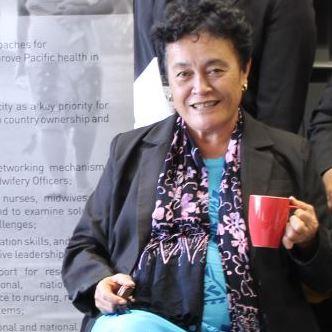The WHO CC UTS acknowledges use of key language from The WHO Global Strategic Directions for Nursing and Midwifery (2021–2025).
The aftermath of the 2009 earthquake and tsunami in Samoa was devastating. Villages were destroyed, thousands were left homeless and 142 people were killed. Over 300 patients were sent to the Tupua Tamasese Meaole hospital for secondary and tertiary care. The South Eastern coastal villages of Upolu Island were destroyed [1].
Nurses and midwives were at the frontline of the disaster during this difficult time, playing a leadership role in caring for the injured and distraught. But the overwhelming nature of the disaster highlighted the challenges faced by Samoa’s health care system.
In order to improve Emergency and Disasters (E&D) Nursing/Midwifery care, a formalised training program was developed and run to prepare for future disasters.
Chief Nurse Fuatai Maiava was involved in implementing this training after seeing the gaps. Fuatai was part of a committee which developed a pilot course to train staff. Lectures, presentations and clinical skills development sessions were prepared. Fifteen people did the course in July 2011.
The chief nurse has long been interested in linking education and practice. In 2008, she was involved in Samoa’s National Avian and Pandemic Influenza Preparedness Plan, which focused on establishing health centres to provide primary care in case the killer diseases struck the island nation [2].
The discussion and initial planning around pandemics meant that when the 2009 tsunami hit, systems were in place to organise well-resourced ministerial staff into established working groups. There were also a number of plans in place to make the process a bit easier. These include the National Disaster Plan for Samoa 2006-2009, the National Avian & Pandemic Influenza Response Plan 2008, and the Disaster & Emergency Response Plans of each health service providers and partners [2].

There are significant challenges related to Samoa’s situation as a small island state. People have drifted away from rural areas and it can be challenging for rural workers to access remote areas. Fuatai’s nursing contribution has involved developing a rural health services plan. In more recent years, Maiava has also been involved in upgrading the nursing and midwifery workforce to ensure it is fit for purpose moving into the new era of health care in Samoa.
1. Dominey-Howes, Lessons for a destabilising planet: insights from the 2009 South Pacific earthquake-tsunami disaster. The Conversation, 2017.
2. Samoan Government, National Disaster Management Plan 2017-2020 2017.

